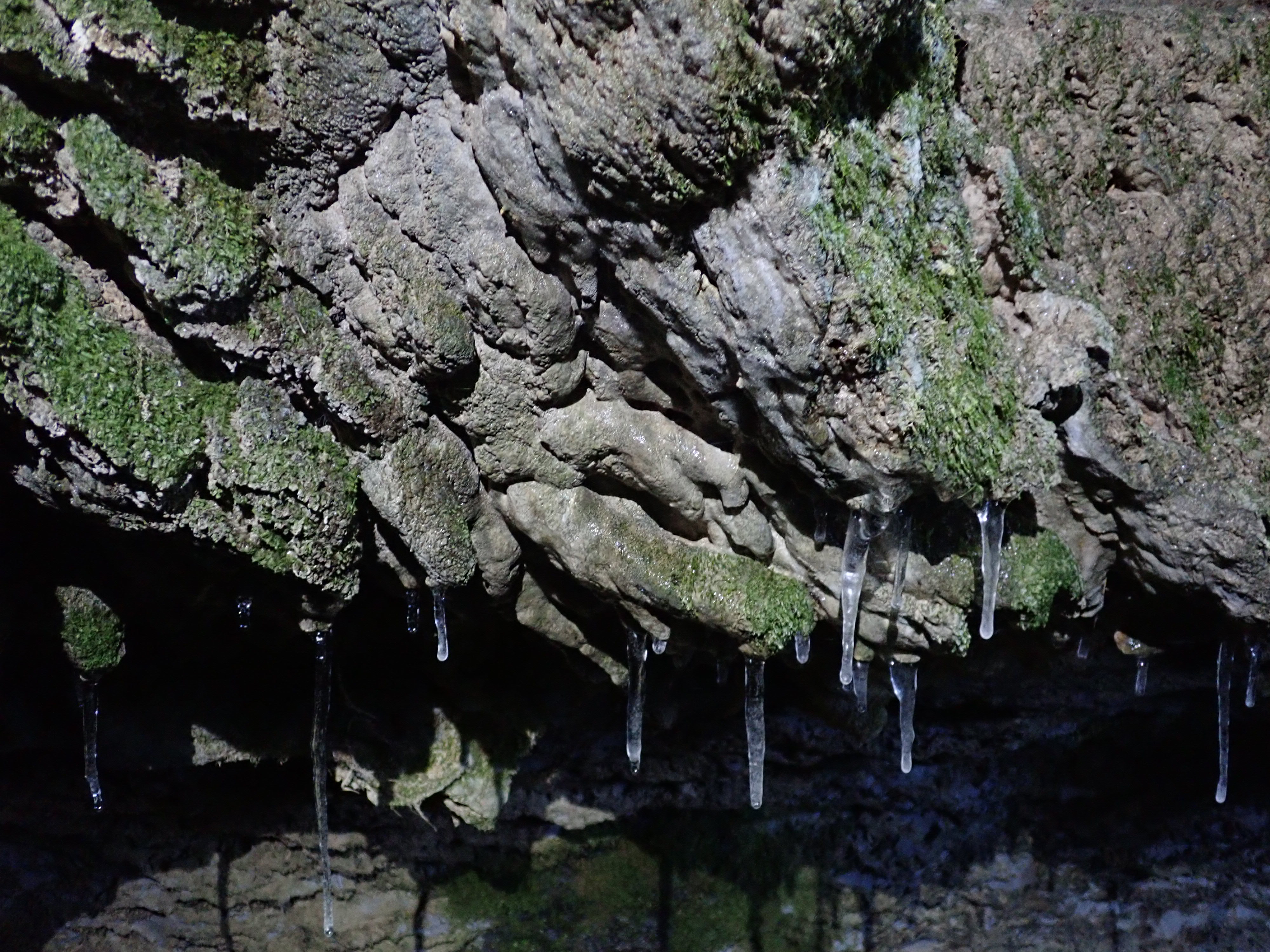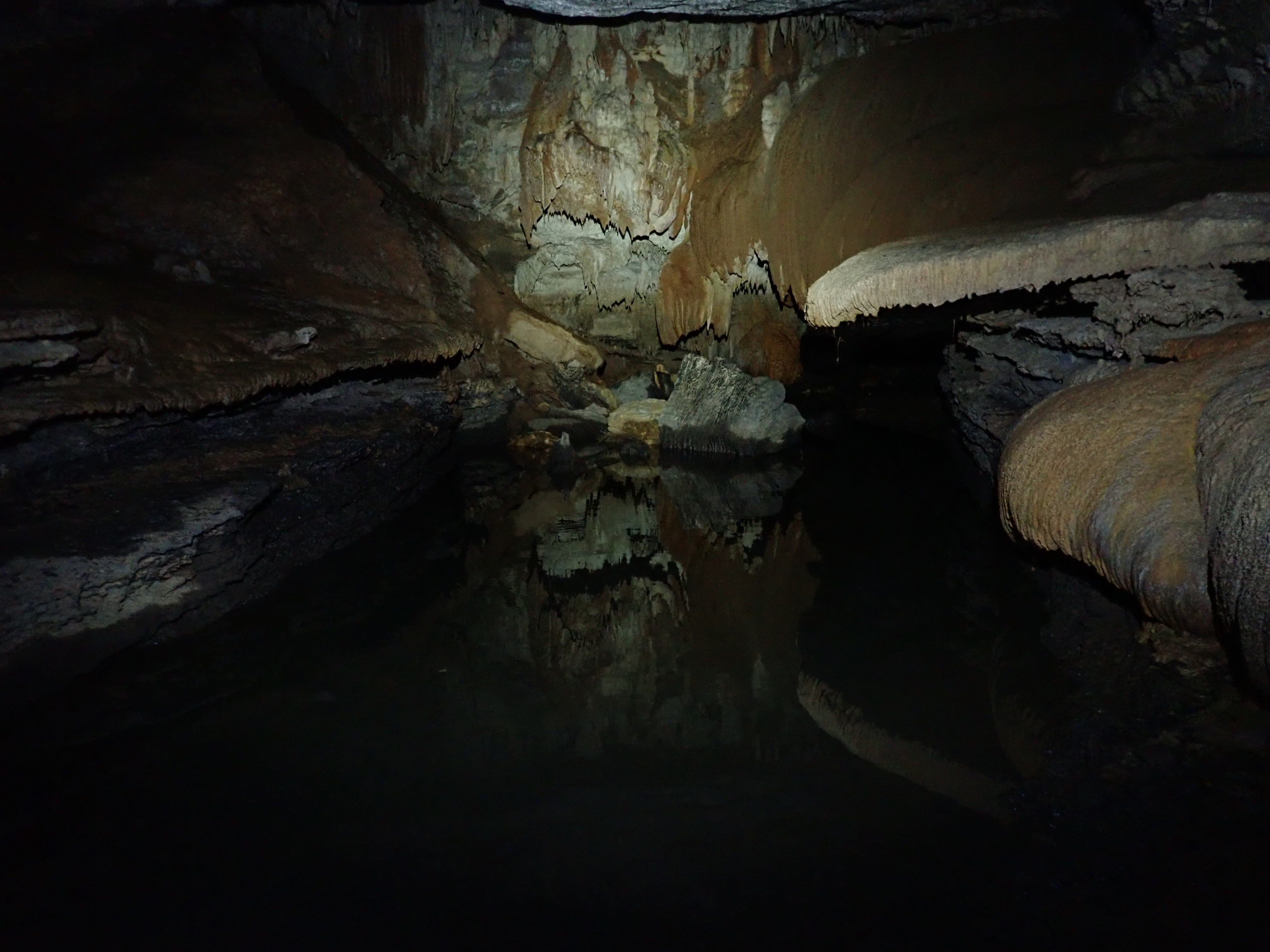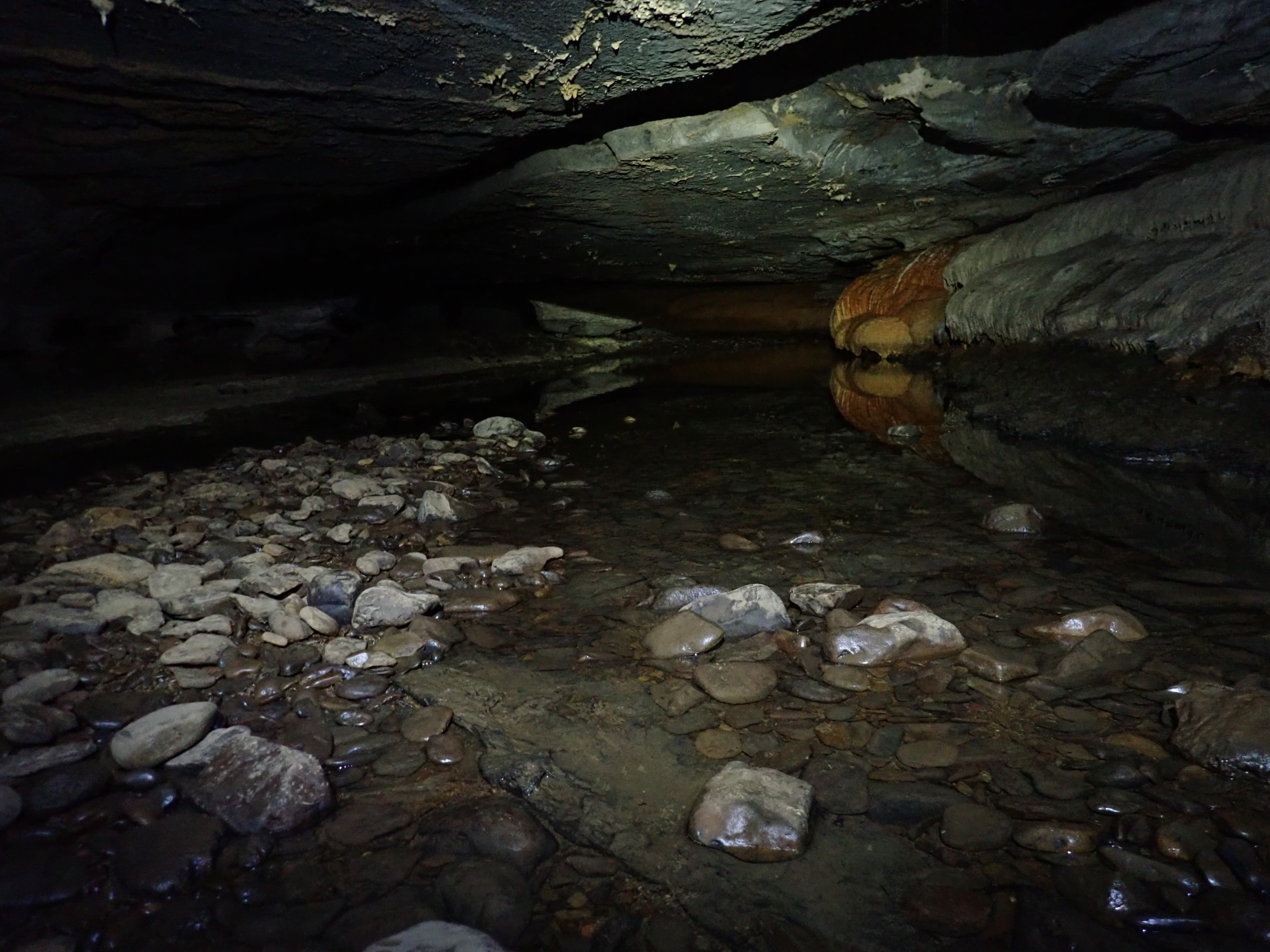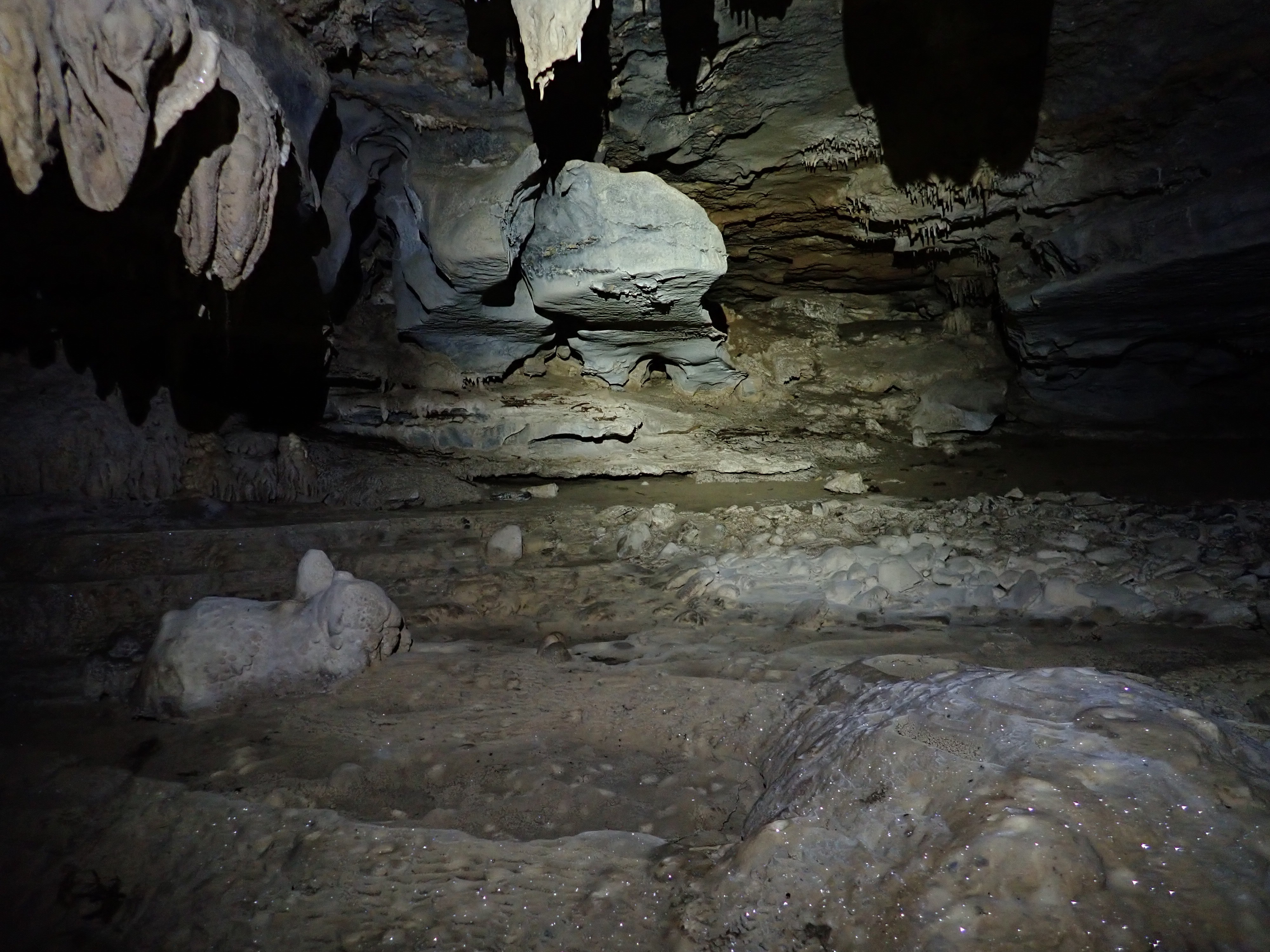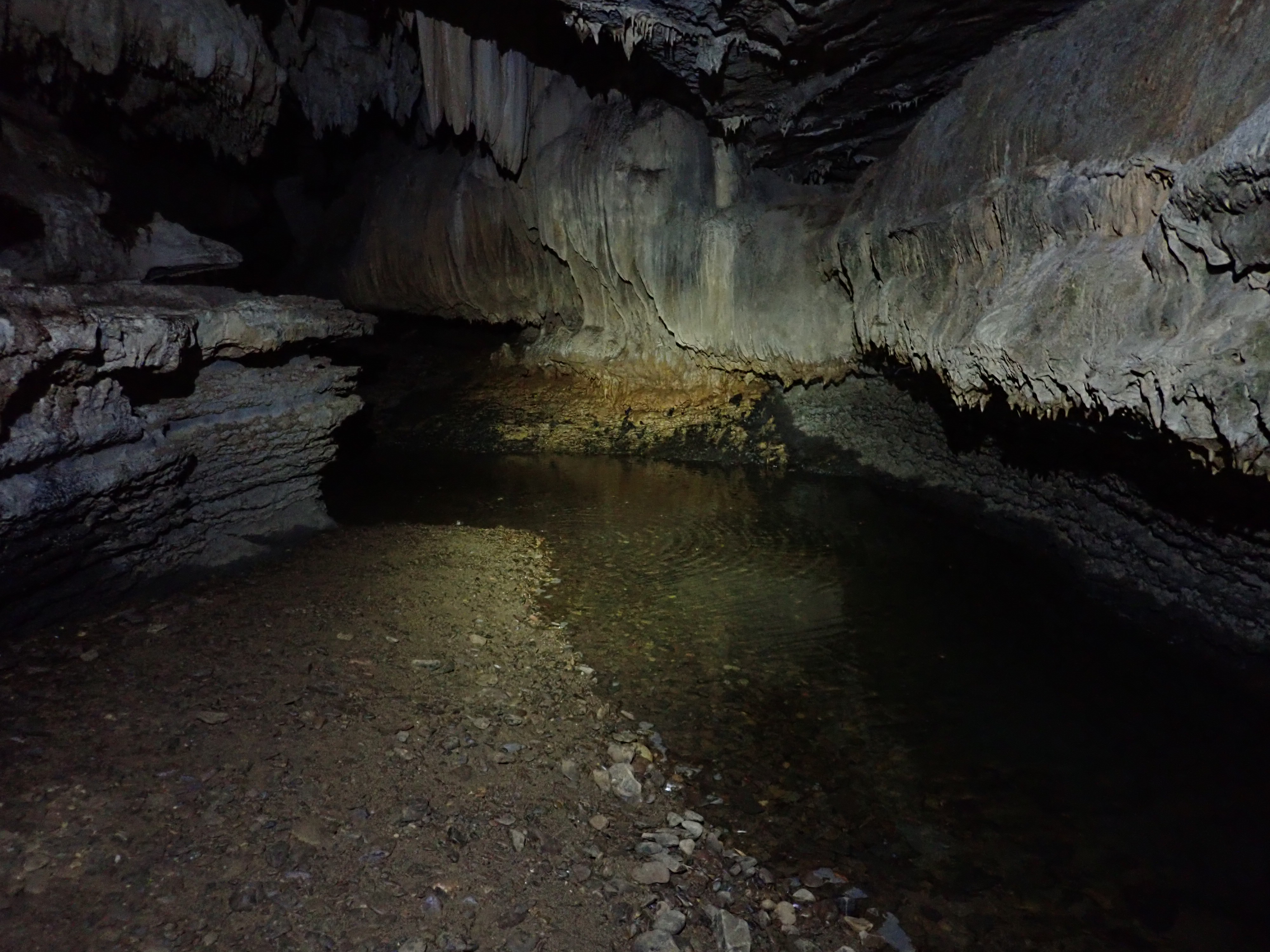
Sampling water
Thanks to those cave tourists who have alerted me to just how long it’s been since the last newsletter! But I’ve been pretty busy. While maintaining the business, I have been back in education full time, starting a new degree in 2005, the Bachelor of Environmental Science. I am now in the second half of my honours year, studying the contribution of soil water storage to the Lobster Rivulet of the Mole Creek Karst system.
ENVIRONMENTAL TOURISM
There has always been a strong science component to the Tours, whether joining me for a half day trip as 2 or 3 people or as part of a group experience, tailored to suit. In fact, it’s your encouragement as visitors which has helped push the ongoing development of incorporating science into the tour experience.
When delivered in a way that is more than just “infotainment”; in a way that treats the visitor as an intelligent, thinking person, science enables us to understand our place in the scheme of things, as a part of the ecology of the planet. Not as apart from it. So, by actually understanding the natural features we see on a Wild Cave Tour, we not only enjoy the experience more fully, but the insight also helps us to see how humanity may move forward into a new era of environmentalism together.
It is not a realisation that some ecosystem somewhere deserves protection, so much as realising the necessity of protecting OUR ecosystem, Planet Earth, to ensure our own survival. It’s that simple.

In the laboratory
In the caves of Mole Creek, we can see in miniature an example of the interdependence of life systems and species, and how the abiotic world (water, fire, climate…) interacts with these systems. It is an encapsulated view of the Earth. Bite size is another way of looking at it.
Mind you, the size of the Tasmanian cave spider (as seen in our tour caves) demands respect for the size of THEIR bite! And yes, your intrepid guide has survived to document the effects. Not that YOU are likely to experience such a dubious honour. These are normally inoffensive creatures. It’s just that one day I was operating the lock of a cave gate. The padlock is enclosed in a cubic steel box, open only at the bottom to prevent bolt-cutters being used to gain illegal entry to the cave. The poor spider who happened to be trying to make its home in this cosy little box was almost squashed by my fumbling hand and of course you know what happened. Although the bite was painful, I realised by the next day there would be no lasting effect. But I can still see the fang marks! Impressive tale to tell!
CAVE CREATURES AND PHOTOGRAPHY
The most fascinating aquatic creatures we see are the glow-worms and the cave shrimps. Thanks to modern digital technology, more people are now able to successfully capture quality images to remember these delights. Digital cameras also make action shots of caving a lot easier, since many affordable point-and-shoot cameras now take better pictures in low light conditions (their small inbuilt camera flashes are quite sufficient). So you can print off the best to show friends and family and to keep the memories fresh.
THE TYPICAL WILD CAVE TOUR VISITOR
There is no such creature! It could be you. You could be a honeymoon couple, someone enjoying an active retirement going around Australia, a member of a corporate group enjoying company rewards for your hard work or a young person on the school trip of your life, sampling the wilderness of Tasmania. You could be an adventure nut, looking for that next thrill. Because each trip is different according to the interests of who comes, and at last you have found a green island at the end of Australia where people still treat YOU as a VIP, it will be a trip you will never forget. And because people like you keep coming, I keep doing it! Each trip is new for me, too.
SEE YOU UNDERGROUND
If you have not yet experienced a Wild Cave Tour, I look forward to showing you the underground wilderness of one of the favourite caving destinations in Australia. My assistant, Paul, is also an experienced Mole Creek caver. Our collective experience exceeds 40 years.
If you have children too young yet to bring wild caving (under 14 years) then may I recommend the wonders of Marakoopa and King Solomon’s show caves at Mole Creek. They are some of the most beautiful and tastefully presented in the country.
